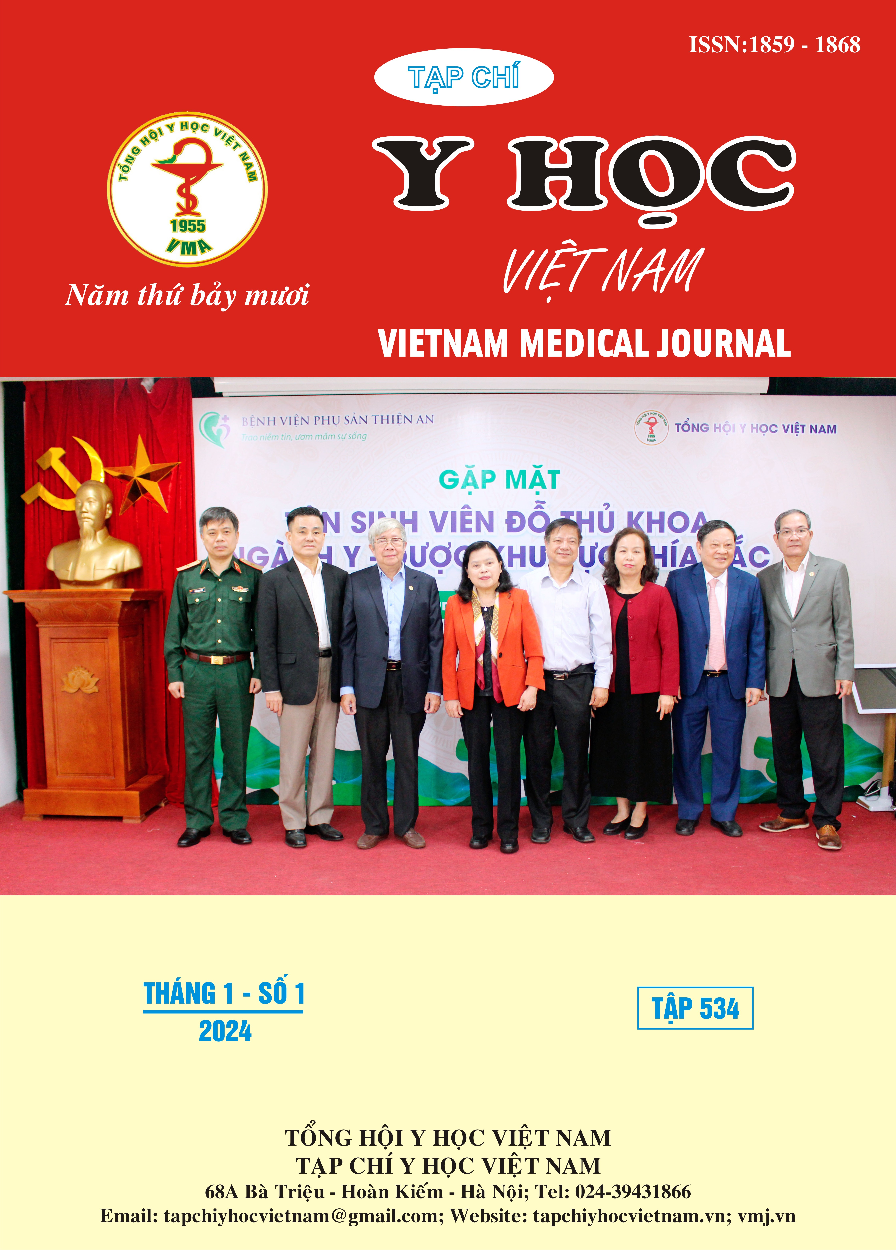ANALYZING THE CHARACTERISTICS OF INTRA - SINUS CALCIFICATION ON COMPUTED TOMOGRAPHY IN THE DIAGNOSIS OF FUNGAL SINUSITIS
Main Article Content
Abstract
Purpose: The aims of this study was to analyze the characteristics of intra-sinus calcification on computed tomography (CT scan) in the diagnosis of fungal sinusitis. Material and Methods: Descriptive study on 70 rhinosinusitis patients examined at Hanoi Medical University Hospital from January 2022 to July 2023. These patients were all underwent a CT scan of the sinuses, then endoscopic sinus surgery and diagnosis confirmed by post-operative fungal testing. Results: Mean age was 53±11.8, the lowest age was 30 years old, the highest age was 78. Fungal sinusitis was diagnosed in 60/70 patients, accounting for 86%, of which 46/60 patients were sinus mycosis, accounting for 76.7%, the remaining was chronic invasive fungal sinusitis. On CT scan, the most common location of calcification was in the center of the sinus, accounting for 84.9%, calcification at the periphery was only seen in 11.3% of cases, this difference was statistically significant with p<0.01. In the group of fungal sinusitis patients, the most common calcification morphology was line-shaped, accounting for 69.8%, the least common was round, eggshell, accounting for 3.6%. The location of calcification in the non fungal sinusitis group was mainly found in the periphery (75%), the difference was statistically significant with p<0.01. The sensitivity, specificity, accuracy, positive predictive value, negative predictive value of calcification signs in the opacities in diagnosing fungal sinusitis were Sn=88.3%; Sp=20%; ACC=78.6%, PPV=86.9%, NPV=22.2%, respectively. Conclusion: intra-sinus calcification on computed tomography had a high value sign for diagnosing fungal sinusitis.
Article Details
References
2. Hsiao CH, Li SY, Wang JL, Liu CM. Clinicopathologic and immunohistochemical characteristics of fungal sinusitis. J Formos Med Assoc Taiwan Yi Zhi. 2005;104(8):549-556.
3. deShazo RD, O’Brien M, Chapin K, Soto-Aguilar M, Gardner L, Swain R. A new classification and diagnostic criteria for invasive fungal sinusitis. Arch Otolaryngol Head Neck Surg. 1997;123(11):1181-1188.
4. Dhong HJ, Jung JY, Park JH. Diagnostic accuracy in sinus fungus balls: CT scan and operative findings. Am J Rhinol. 2000;14(4):227-231. doi:10.2500/105065800779954446
5. Lê Trung Nguyên. Nghiên Cứu Tình Hình Viêm Xoang Do Nấm Tại BV TMH TP. Hồ Chí Minh Từ Năm 2020-2021. Luận văn thạc sỹ y học. Đại học Y dược TP Hồ Chí Minh; 2021.
6. Mai Quang Hoàn. Khảo Sát Đặc Điểm Lâm Sàng, Cận Lâm Sàng và Điều Trị Viêm Xoang Do Nấm Tại Bệnh Viện Chợ Rẫy. Luận văn thạc sỹ y học. Đại học Y dược TP Hồ Chí Minh; 2018.
7. Trần Nam Khang. Đánh Giá Kết Quả Điều Trị Viêm Xoang Do Nấm Bằng Phương Pháp Phẫu Thuật Nội Soi Tại Bệnh Viện TMH TP. Hồ Chí Minh. Đại học Y dược TP Hồ Chí Minh; 2018.
8. Jiang RS, Huang WC, Liang KL. Characteristics of Sinus Fungus Ball: A Unique Form of Rhinosinusitis. Clin Med Insights Ear Nose Throat. 2018;11:1179550618792254.
9. Dufour X, Kauffmann-Lacroix C, Ferrie JC, Goujon JM, Rodier MH, Klossek JM. Paranasal sinus fungus ball: epidemiology, clinical features and diagnosis. A retrospective analysis of 173 cases from a single medical center in France, 1989–2002. Med Mycol. 2006;44(1):61-67.
10. Cha H, Song Y, Bae YJ, et al. Clinical Characteristics Other Than Intralesional Hyperdensity May Increase the Preoperative Diagnostic Accuracy of Maxillary Sinus Fungal Ball. Clin Exp Otorhinolaryngol. 2020;13(2):157-163. doi:10.21053/ceo.2019.00836.


